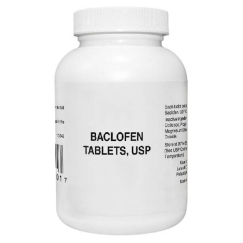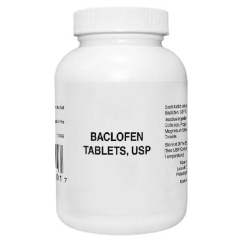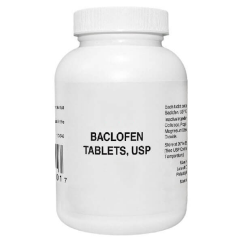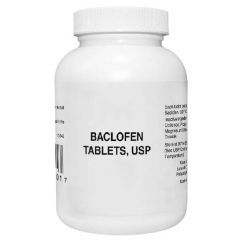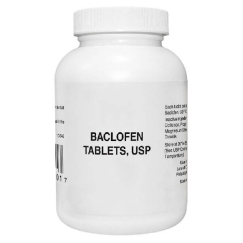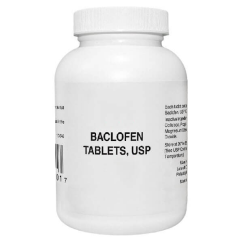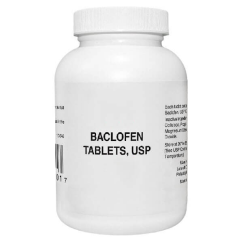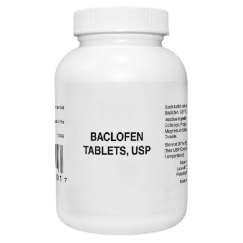What is Baclofen?
Baclofen is an FDA-approved musculoskeletal relaxer used to treat spasms and stiffness caused by multiple sclerosis and spinal cord diseases. Introduced originally in 1960, Baclofen was made to treat epilepsy. However, the outcome did not satisfy the medical experts and they stopped the use of the medication for epileptic seizures. Later, the researchers discovered that baclofen is very effective in the treatment of muscle spasticity.
If you suffer from muscle pain and stiffness, your doctor might prescribe you this drug. Now you can easily order Baclofen 20 Mg online on Shopemed.
What are the Common Uses of Baclofen?
The FDA has approved Baclofen for managing reversible spasticity, specifically, for relieving flexor spasms, clonus, concomitant pain, common sequelae of spinal cord lesions, and multiple sclerosis. Apart from the licensed uses, Baclofen also has several off-label medical uses. Though the FDA does not yet accept these uses, the ongoing research about Baclofen’s potential has helped discover new hope. Here are the examples of label uses ;
- Alcoholic liver disease,
- Preventing Alcohol Use Disorder,
- Trigeminal neuralgia,
- gastroesophageal reflux disease,
Treating Muscle Spasms with Baclofen
Baclofen primarily works by affecting the nervous system, specifically by activating GABA receptors in the brain and spinal cord.
Here's how baclofen works for muscle spasticity:
GABA Receptor Activation:
Baclofen binds to and activates GABA-B (gamma-aminobutyric acid type B) receptors in the central nervous system. GABA is an inhibitory neurotransmitter that helps regulate the activity of neurons. When GABA binds to its receptors, it prevents the rapid firing of neurons. This event leads to a reduction in nerve signaling and muscle activity. Hence, the involuntary muscle contractions stop. Lowering Nervous Excitability: By activating GABA-B receptors, baclofen reduces the excitability of neurons in the brain and spinal cord. This dampens the transmission of signals along nerve pathways involved in muscle spasticity, leading to the relaxation of muscles and a decrease in spasticity.
Inhibition of Reflex Pathways: Baclofen stops the transmission of signals along reflex pathways in the spinal cord. These reflex pathways are involved in the initiation and maintenance of muscle spasticity. Baclofen strongly contributes to reducing reflexes and muscle contractions due to spasticity by blocking these pathways. Changing Neurotransmitter Release: Baclofen may also be responsible for modulating the release of other neurotransmitters, such as glutamate and noradrenaline. These neurotransmitters regulate muscle tone and spasticity. By changing the balance of neurotransmitters in the central nervous system, baclofen helps to restore normal muscle tone and reduce spasticity.
In addition, baclofen's mechanism of action involves modulating neurotransmitter activity in the central nervous system, leading to a reduction in muscle spasticity and an improvement in muscle function for individuals with conditions such as multiple sclerosis, spinal cord injury, cerebral palsy, or other neurological disorders associated with spasticity.
Baclofen for Alcoholic Liver Disease
Alcoholic liver disease is the most common repercussion of drinking excessive alcohol. It is also one of the most common reasons behind alcohol-related death in the world. But why does the liver get damaged by alcohol consumption?
The liver is the strongest organ in the body. It filters everything you eat and drink so that your body remains toxin-free. Since the liver is the principal site of ethanol metabolism, heavy drinking causes harm to the tissue. Usually, the liver re-generates new cells and keeps functioning. However, due to alcohol processing, liver cells start to die. Liver issues like hepatitis might start and end up escalating to cirrhosis.
Preventing Alcohol Use Disorder with Baclofen
AUD or Alcohol Use Disorder is a condition marked by your inability to stop drinking alcohol. In this condition, you become dependent on alcohol and without it, you will display withdrawal symptoms. When you suddenly stop drinking after a long period of heavy drinking, you will develop symptoms like:
- Nausea
- Anxiety
- Vomiting
- Irritations
- Sweating
- Depression
- Confusion
- Headache
- Insomnia
One of the most striking off-label uses of Baclofen is in the treatment of alcohol use disorder. Baclofen helps minimize the craving and contributes effectively to maintaining abstinence.
Using Baclofen for Trigeminal Neuralgia
Trigeminal neuralgia is an extreme form of pain that hurts like a sharp, shooting pain. This pain usually hurts on the one side of the face. This chronic pain condition can be long-lasting. From subtle touch to light movement of the face: anything can trigger pain. Some common symptoms of this condition are:
- intense shooting or jabbing pain like an electric shock
- pain triggered by touching the face, chewing, speaking, or brushing your teeth.
- facial spasms.
- Pain on one side of the face
- With time pain gets worse
Baclofen decreases substance P in the spinal cord to relieve pain. When treating TGN, the initial oral dosage of baclofen is 15 mg, given in three separate doses. This is followed by a gradual titration to a maintenance dose of 50–60 mg daily.

